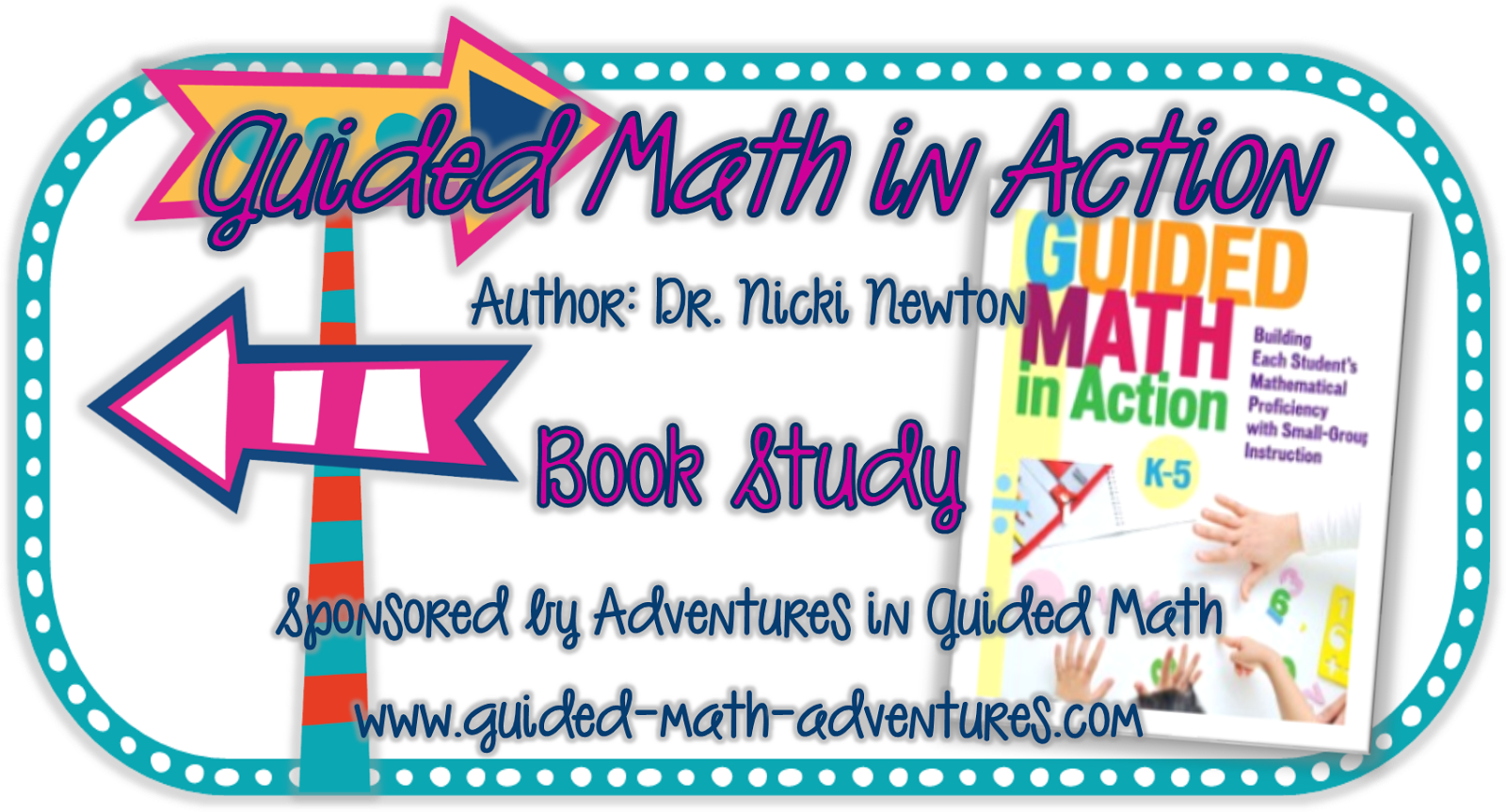Good morning!
I'm glad you came back for chapter six in our book study. I am learning so much through this study and reading all the posts from the other blogs. I hope you are enjoying it, too.

This chapter is all about the actual guided math lessons that we teach our groups. It is packed full of examples, planning sheets, and templates that were very helpful for this newbie. :-)
Dr. Nicki Newton gives eight things the teacher does during a guided math lesson.
1. Presents a brief mini-lesson.
2. Presents a focus for the meeting.
3. Outlines learning expectations.
4. Models or demonstrates the concept.
5. Allows discussion and practice.
6. Monitors the practice time and takes notes.
7. Brings students back together for a debrief.
8. Discusses their next steps (such as practice or homework).
My main take-away from this chapter is that I will need to use more detailed lesson plans for my groups!
"Guided math lessons follow a particular protocol (pg. 76)."
This stuck out to me because the word protocol was used a lot in the Pathways to Reading training that I just attended. Protocol is important! We can't just pull some students back, throw a lesson together, and hope for the best. Our teaching needs to be very focused and intentional.
1 and 2
I'll be starting guided math this year, so I haven't used any of those templates yet.
All of my lesson plans were done on Planbook.com last year. Here's a picture:
Not very detailed, right?
Even my reading is not detailed and I have reading groups! I knew how I would differentiate for each group (in my head and in group folders...), but after reading this chapter, it makes me want to get more detailed and intentional in my reading groups too.
I loved using Planbook.com. If you aren't familiar with it, it is all online. The best features were the "bump" or "extend" options. It was so easy to make adjustments if needed. Not like my plans I used to make in Word tables...that were all marked up with arrows going everywhere by the end of the week. Then as I typed up the next week, I would have to copy and paste all those lessons that got "bumped" or "extended." I also liked color-coding things. In my plans above, green highlight meant it was in their workbook. Blue was for things that I needed to make sure I had copied for the week. It is only $12 per year.
I may continue to use it as I did last year and add a more detailed lesson plan for my groups (reading and math) on paper.
I took some of the ideas from the book and tried to come up with a lesson plan that I thought would work for me. I am planning to have three groups, but I went ahead and made one template with four. Click on the pictures to download if you would like!

3
I hadn't realized it until reading this chapter, but Saxon really does a good job of introducing concepts in a concrete way. Lessons then move on to the pictorial level, followed by the abstract level. I'm thinking specifically of how the curriculum introduces adding two digit numbers with dimes and pennies. For me (math-loving girl), it seemed a little confusing and like a waste of time. BUT some of my students really needed this concrete way of learning.
I'm so excited to do guided math this year! It will be so much easier to meet the needs of all my students.
See you back here on Thursday for Chapter 7 - Building Mathematical Proficiency!
If you missed the previous chapters, you can see them by clicking below.







I'm so happy to hear you like Planbook.com. It's something I have been debating on trying this year. Is it pretty user friendly? The price is just right!
ReplyDeleteDefinitely user friendly! You really can't beat the price for all the cool features available!
DeleteCrystal
This really does look like a great book. It's on my list. :)
ReplyDelete❀ Tammy
Forever in First
Tammy,
DeleteI hope you get around to it soon. It has been a great read!
Crystal
Our math units always start with the concrete before moving on to the pictorial and abstract representations, too. I am a math loving girl like you and didn't always feel like the concrete step was necessary. Now that I've had years of experience with many different students, I realize that this step is crucial for my students who don't have a strong number sense.
ReplyDeleteThe Traveling Teacher
Yes, yes! I realize the importance of that concrete step now, but it sure was lost on me before. :-)
DeleteCrystal
Thanks for sharing the lesson template you adapted for your needs--it's nice to be able to see different varieties. :0)
ReplyDeleteSmiles,
Sarah
You're welcome! Hope it is helpful to others.
DeleteCrystal